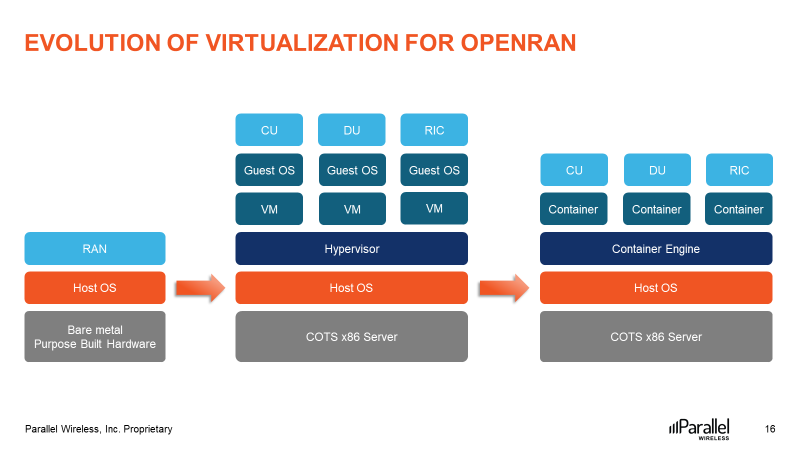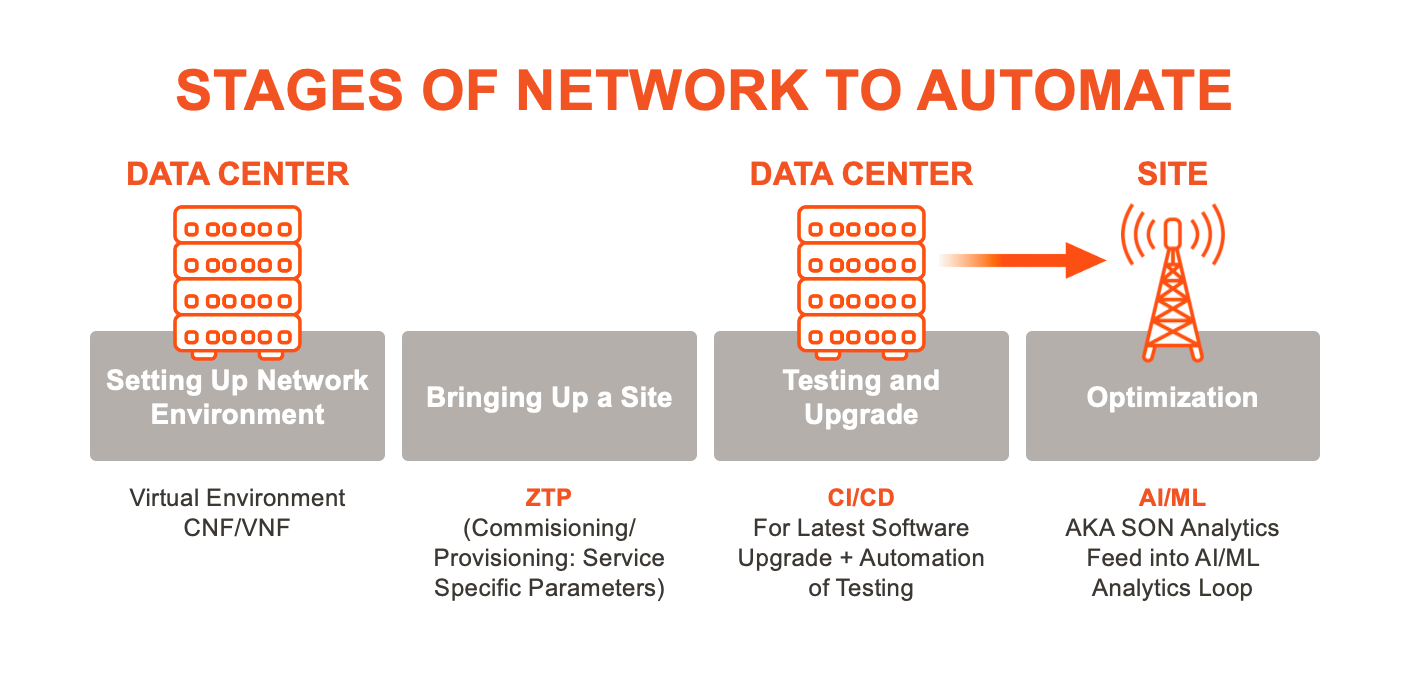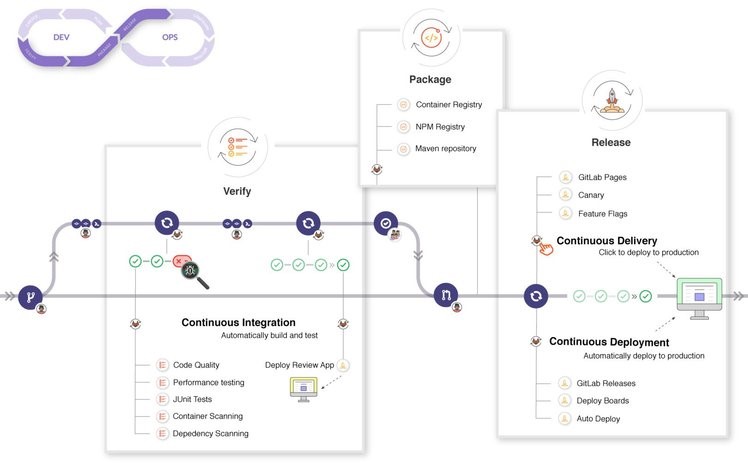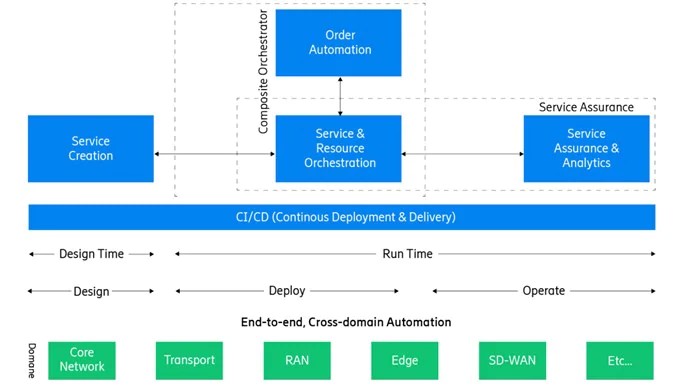2020 saw major strides for Open RAN as more operators started to trial and deploy the technology across the globe and more radio, server, and software vendors joined the ecosystem. With wider adoption, it also became apparent that disaggregation of previously tightly coupled radio, hardware, and software presented both some initial integration challenges as well as some ongoing challenges regarding how the disaggregated components would be managed and upgraded.
The good news is that Open RAN follows the enterprise disaggregation path as seen with data centers. Once hardware and software were disaggregated in the enterprise sector in the 2000s, two similar challenges needed to be addressed:
1. How to integrate software and hardware from different vendors.
2. How to automate the upgrades to that software.
This is where cloudification, ZTP (Zero Touch Provisioning), AI (Artificial Intelligence), and ML (Machine Learning) coupled with Analytics come in to enable automation in Open RAN, and these elements are becoming more and more important to mobile operators.
Cloudification with microservices and containers brings operational agility, enables automation and elasticity. To manage secure network operation, ML provides intelligence and response to take different action on the network - for example, scaling. This delivers operational efficiency, 24x7 operational assistance and a means to harness Open RAN’s flexibility. Analytics is a means to understand network goals.
Let’s dive into how automation will help Open RAN to deliver on its promise.
Cloudification with microservices and containers
Cloudification via cloud-native functions (containers and microservices) is the foundation of Open RAN and will help with effective automation in Phase 2 of Open RAN.
Different RAN function components can be implemented as separate microservices, not as one monolithic virtual machine (VM). Because of that, they can be scaled up in any way required to optimize the RAN function’s performance.
Developers can make changes to one or a few of microservices without having to update and impact the entire RAN application. A microservices architecture allows mobile operators to continuously innovate by embracing an agile DevOps model. A mobile operator can push out any RAN upgrades to as many sites as needed, as testing a microservice involves very few test cases.
Microservices are packaged in containers, allowing developers to change only a specific microservice as needed. Changes will be limited to a microservice in a single container. Each microservice can be deployed, upgraded, scaled, and restarted independently of other microservices in the RAN application, using an automated system, enabling frequent updates to live applications without impacting SLAs.

Source: Parallel Wireless
Key takeaway: cloudification doesn’t mean running RAN services from the cloud. It means virtualizing RAN services (microservices) in containers to ensure quick actions can be taken at the edge of where RAN equipment currently sits. The APIs will be responsible for connecting cloud-native applications and underlying hardware and relevant software infrastructure.
Automation
Automation is enabled by four capabilities across all the stages of network deployment, from initial site bring-up to optimization stages as we show below: ZTP, CI/CD, and AI/ML and Analytics. Automation is a key enabler for cloud native. Any updates are deployed automatically without disrupting the network or end user experience. Automation is used for scaling, testing, and allocating software and underlying hardware resources.

Source: Parallel Wireless
ZTP stands for zero touch provisioning, meaning a mobile operator does not have to perform any manual tasks to configure the cell sites. Sites are configured quickly and automatically.
Once sites are configured, Continuous Integration and Continuous Development (CI/CD) steps in to automate any updates and reduce any manual labor involved on site or in the data center. By reducing or eliminating the need to send engineers to sites, the ongoing maintenance costs will be reduced for mobile operators.
Key takeaway: ZTP will be critical for dense 5G deployments when hundreds of sites will need to be configured.
CI/CD frameworks have been used in IT and enterprise spaces for years. There are two important factors to keep in mind as CI/CD is adopted for Phase 2 of Open RAN. The first factor is the disaggregation itself, as hardware and software components are coming from different vendors. The second consideration is around physical components (servers, radios) in the RAN.

CI/CD framework. Source: GitLab
All these components power different functions across the network. When applying CI/CD models to RAN upgrades, they need to holistically feed into the overall CI/DC strategy across all network segments - RAN, transport, core. So, in addition to creating a cohesive RAN CI/CD strategy, a mobile operator needs to create an overall network CI/CD strategy.
DevOps requires a mindset shift, as traditionally separated departments within an organization now need to work very closely together. They will need to implement a set of new automation to be used across the group for monitoring and testing the application and keeping it secure.
Key takeaway: DevOps and CI/CD enable fast changes to software to deliver on business needs and end user needs. The updates delivered to sites can be monitored to evaluate how they impact end users, and whether they are achieving the pre-determined business goals.

Source: Ericsson
The integration, software upgrades, and lifecycle management of these disaggregated software components running on COTS hardware is enabling a new testing model - where software from the different groups within an organization is not tested in silos, but rather under an overall CI/CD umbrella. As a result, CI/CD will significantly reduce development time from hours to minutes of effort, eliminating the majority of manual tasks.
This approach will help with creating CI/CD blueprints for future deployments with:
-
A more interconnected ecosystem of Open RAN vendors: By implementing CI/CD, mobile operators embrace greater collaboration between different ecosystem members, which fosters innovation. It supports multi-vendor CNF onboarding and lifecycle management. This approach minimizes risk through frequent delivery of new features and new optimizations while increasing efficiency via automation that leads to the faster introduction of new services to keep end users happy.
The mobile operator’s maintenance team can be enabled with these open automation tools to allow the set of tools to grow across vendor-neutral sets of applications. - The combined power of containers and CI/CD: Agile DevOps simplifies automation by providing validated stack templates for containers to host microservices. These upgrades will be automated with CI/CD. The combination of software being pushed via CI/CD to containers allows MNOs to easily define their own architecture and make Open RAN easier and more cost-effective to deploy and maintain. The main benefit will be in sites running as a service with software updates being pushed to hundreds of sites automatically instead of scheduling them for upgrades for when a crew is available to go on site and upgrade manually.
- Automation of testing and upgrades: implementing a CI/CD model in the telecoms industry helps to migrate the testing, integration, software release, and actual software deployment of the RAN from manual fieldwork to automated and remote deployment. Manual on-site upgrades are subject to mistakes, and the maintenance window is short. With automation, mistakes are eliminated, and the time window gets expanded.
Key takeaway: The CI/CD fast delivery cycle makes it easier for developers to work as the business requires. Kubernetes makes finding faulty code easier, meaning it can be reverted or fixed much faster without impacting the business. If there is an issue with infrastructure, automation will enable moving the application to another data center, edge or centralized, depending on the application. Rollbacks for application or container failing are automated, so the latest stable version is always available minimizing downtime and any impact on the end user.
Artificial intelligence (AI) and machine learning (ML)
In a recent Omdia survey, 80% of mobile operator responders stated that they plan to use AI to automate network operations as soon as 2021. AI coupled with ML will be the main tools to guarantee the quality of network performance and the quality of the resulting end user experience across ALL Gs.
AI will be responsible for analyzing data and using ML algorithms to adjust network conditions in regard to proper load balancing, ICIC, and managing handoffs seamlessly - all to ensure the subscriber gets the best experience possible.
All the data sources, as in Big Data, will need to be considered to first classify the data, then secondly recognize the pattern or abnormality, then thirdly predict the behavior. As time progresses, ML algorithms will evolve and become better at predicting and helping AI to make real-time network decisions. This will be critical for 5G when humans and things will be connected.
But any AI can be only as good as the data that goes into it. The data will need to cover different use cases that need to be supported and include data from different vendors across not only all components of the RAN, but the overall network. This is where openness will play a critical role and where the ecosystem must be created.
AI models fall into two categories: supervised and unsupervised learning. Being real-time cellular network prefers models that are unsupervised learners to eliminate the model and training challenge on a continuous basis.
A near real-time RIC should include artificial intelligence (AI) as an xAPP responsible for predicting, preventing, and mitigating situations (i.e. handover) that affect customer experience. The reason AI needs to be in the near-real-time RIC is that AI will drive time-sensitive decisions for network performance. All xAPPs should use the unsupervised learning modes.
AI/ML algorithms will be responsible for:
- Forecasting parameters
- Detecting anomalies
- Predicting failures
- Projecting heat maps
- Classifying components into groups
As a result, this will enable proactive action and the ability to predict the future with certain accuracy. Based on predictions, a preventative action can be taken to avoid a similar situation in the future.
This network and subscriber data will be filled into Analytics to produce hourly and daily reports on behavioral and network patterns.
Key takeaway: AI software will use algorithms created by ML running as an rAPP in the non-real time RIC. Any algorithms and training can be built in non-real time. The reinforcement of those decisions needs to happen in real-time by AI. An ML rAPP from the Non-real-time RIC will help the AI xAPP in the Real-time RIC to recognize traffic patterns and abnormalities and adjust network health to provision the appropriate RAN resources for the optimal subscriber experience.
Analytics
Analytics is a tool to see and understand what’s going on in the network and how those changes affect subscriber experience. Analytics will provide a visual representation of patterns or abnormalities and will help a mobile operator to understand what needs to be corrected to improve network performance for a better subscriber experience. It’s an opportunity to review the AI data and see reports on how ML is improving the network.
Key takeaway: Analytics will be deployed as rAPPs as part of the Non-real time RIC and will utilize Big Data to provide an overall view of the network conditions. There will be a need for better openness and better APIs between vendors that enable that data mining.
Summary
Clear automation strategy and defined processes across CI/CD, ZTP, AI/ML, and Analytics will help mobile operators to move into a fully automated RAN world, which is key when RAN components come from different vendors as with Open RAN.
The scope of work is the same as with legacy RAN; what is different is the number of vendors that will be a part of the Open RAN ecosystem. Automation of configuration with ZTP and automation of ongoing maintenance with CI/CD, AI/ ML will help mobile operators to realize the promise of Open RAN to avoid vendor lock-in while Increasing efficiency, providing better resource utilization, and driving down overall TCO.




















